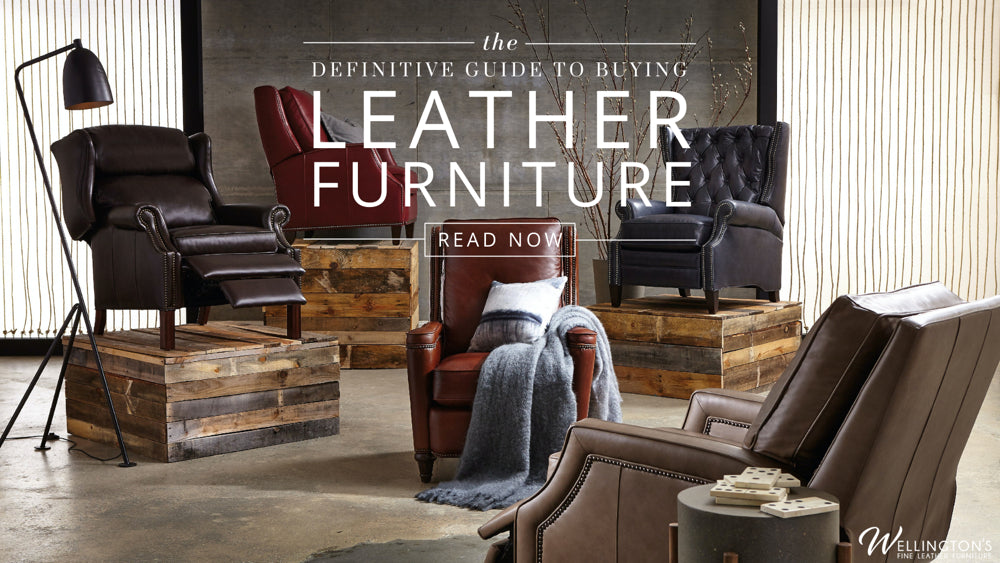
The 2025 Ultimate Guide to Buying Leather Furniture
The Definitive Guide to Buying Leather Furniture
So you're looking to invest in leather furniture.
Maybe you love the look and feel of natural, full grain leather. Or maybe you are into the durability and cleanability of genuine leather furniture.
The definitive leather furniture guide will help you determine what will work best for your family, lifestyle, and budget. How to recognize and get the most for your money.
In this, our Definitive Guide to Buying Leather Furniture, we'll help you understand everything you need to know. Here you'll learn about all the options when shopping for leather furniture.
Then, you can figure out where your needs, budget, and taste intersect on the way to the right buying decision.

What You Need to Know About Leather Furniture
When buying furniture of any kind, research is your best friend.
That's even truer when you're looking to buy new leather furniture. There are a lot of options when it comes to frame material, construction, suspension system, and cushion options.
But let's start where any serious leather furniture buyer should, with some much needed background info on the leather industry.

What You Didn't Know About the Leather Industry

Leather is a commodity item. The price of hides fluctuates.
The cost of a leather sofa is mostly the cost of the leather itself.
All hides are bought and used for something. Yet only the top 3-5% of hides can be used without undergoing some sort of “correction” process.
This scarcity is the main thing that pushes up the price of the highest “full grain” leather products.
Tanneries buy hides in bulk orders that each contains various levels of quality. Typically, these hides come from beef cattle. They vary based on the type of cattle, location raised, and life the animal led.
Bulk orders of hide are assigned classifications based on where they come from—which helps to predict the average quality in any given batch.
Hide providers and tanneries usually label batches with one of three rating levels. They might call them first, second, and third grade. Or more likely simply A, B, and C. They might even go with something like standard, utility, and premium.
Different countries have different standards when it comes to the treatment of livestock. So, the rating of any given batch is based primarily on where in the world it comes from. China hides will price below a hide that originated in Europe.
Grade and Location Rule of Thumb
- First Grade: Southern Germany, Switzerland, Norway, Finland, Northern Italy.
- Second Grade: Northern Germany, the United Kingdom, the Netherlands, United States.
- Third Grade: Australia, Africa, South America, Asia including China
Generally, the highest quality hides only come from the top grade. This is important because the highest qualities of leather furniture can only be made using the top cut of the best hides.
As shown in the figure below, hide has three main layers: the corium, the grain, and the transitional space between the two (the flesh is stripped away).
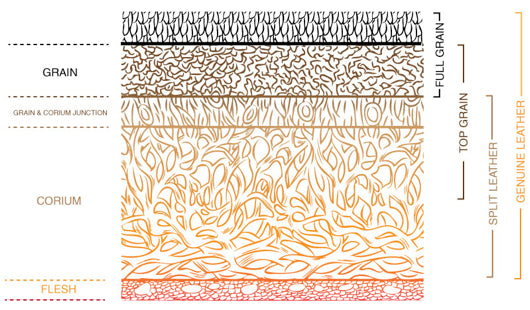
As hides are processed, they are cut to the thickness based on their quality. Whenever a hide can be used as full top grain leather, it is. The next cut within the top grain will be used and the grain corrected to cover up any remaining scars or blemishes. Then these hides become corrected top grain hides. These are typically entry grade level or lower price points. Grade 1, A or a starting price point. The more prep work done to a hide the less valuable it is. Pure aniline hides are the most natural only dyed for color.
Full grain leather is the leather of connoisseurs. It is really the only kind with a finish that shows off the organic markings of the hide. In this way, it is the only leather with true “life” to it. At Wellington's, all our leathers come from premium hides, whether full or top grain.
All other leather is sanded—or otherwise corrected—to erase and hide any remaining blemishes. These are still top grain hides but due to the embossing they are now called a corrected grain and will be priced at a lower price point.
Leather Quality: Type and Finish
Real leather aficionados understand just how important the leather itself is, whatever it covers.
Leather is the strongest material used for upholstering furniture. It is breathable, beautiful, and feels great to the touch.
Different leathers have different uses, but the most expensive leather comes from premium hides that require the least amount of processing. When it comes to leather, you get what you pay for. At the same time, there is a market for every quality.
In truth, what is considered “high-quality leather” to you should be based on its intended use (more on that later). And the biggest things that affect that are the type and finish.
Let's compare and contrast the different types of finished leather that are used in furniture upholstery.
The best leather for you depends on your lifestyle and how you want your new leather sofa to look through the years. Your personality reflects your choice of leather. Are you a pure aniline kind of family? Do you want your new leather sectional to show a wear story? Or do you want something easy to clean and never changing?
Each type of leather offers plenty of color options so first decide what type of leather works best for your application. Then search for the perfect color.
Pure Aniline Dyed, Full Grain Leather
This is premium leather. Relatively few hides are suitable to become full-grain leather, which has a natural look and the most sought-after texture among all leather types.
 Look: 9-10
Look: 9-10
Feel: 9-10
Cleanability: 1-3
Durability: 9
Price Range: 8-10
Also known as “pure aniline” or “full aniline”, full grain leather is the most expensive variety mostly because it is considered natural. This kind of leather needs no “correction”—as they say in the tanning industry.
These leathers are processed in such a way that the scars, folds, wrinkles, and other imprints are highlighted. That makes each piece as unique as a fingerprint. The surface of pure aniline hides is constantly moving like a beautiful piece of granite. It is often referred to as the “naked leather” look. Vat dyed using only leather dye no additives.
Semi-Aniline or Aniline Plus
This is like premium leather, plus protection. While not quite everything pure aniline is, these leathers still stand head and shoulders above most everything else.
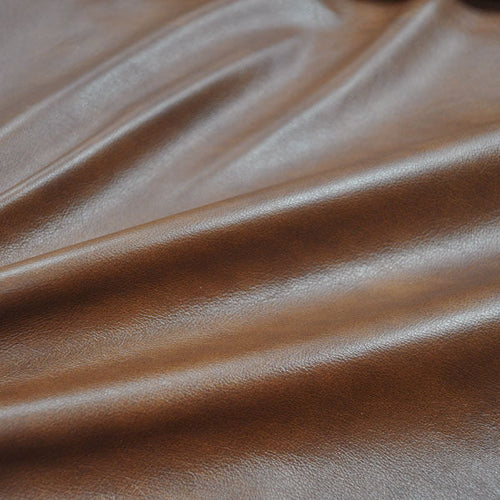 Look: 9-10
Look: 9-10
Feel: 9-10
Cleanability: 8-10
Durability: 9-10
Price Range: 8-10
Most leather finished with semi-aniline dyes are full grain hides. It is nearly as supple as full aniline leathers but with a wider color profile.
The largest difference between this and pure aniline leather is the addition of micro-pigment coloring and a protective topcoat. This means that liquids puddle, allowing time to wipe off spills.
Aniline plus or semi aniline leathers are usually in a mid-price point and are great for those that want protected leather without worrying about spills.
These hides like most will develop a patina over time with daily use. A beautiful benefit to look forward to.
Pigmented or Finished
These leathers have visible scars from the natural life of the cow. To make them usable for upholstery they require some additional hide prep. Usually reserved for an entry level price point.
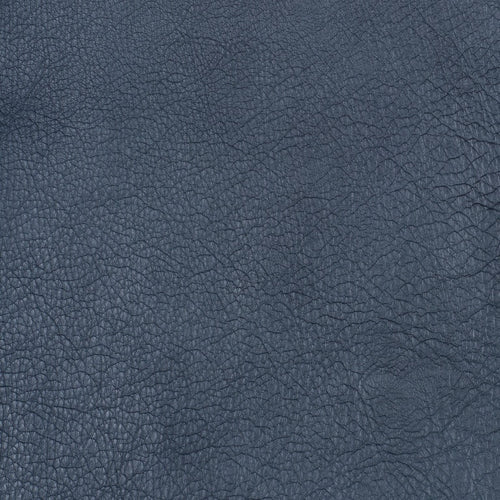 Look: 5-8
Look: 5-8
Feel: 6-8
Cleanability: 8-10
Durability: 8-10
Price Range: 6-9
These leathers are a corrected grain. The hides are buffed, sanded, or otherwise corrected before they are finished with color and a protective clear coat.
All the “correction” covers up any remaining blemishes. The final product is embossed with a natural looking grain pattern to make it look more like a natural hide. This same embossing can also be used to create decorative embossing like alligator or a snake look.
Corrected grain leather is a great choice for high-traffic furniture because it can handle it. The protective coating makes this leather much easier to clean and more resistant to staining than aniline or some semi-aniline dyed leathers.
Nubuck
Some might categorize nubuck as a decorative leather. It is soft, durable, and water resistant. This is suede's tougher cousin and feels very much like a flannel.
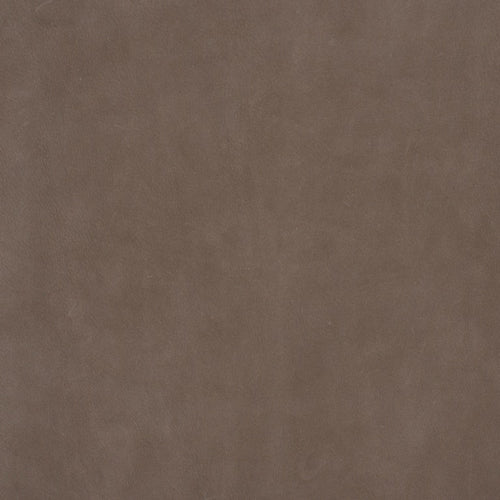 Look: 5-8
Look: 5-8
Feel: 6-9
Cleanability: 6-7
Durability: 7-9
Price Range: 5-9
Nubuck is created out of the top grain of the hide. The top surface is sanded and buffed to create a napped surface.
This processing detangles the protein fibers that make up the surface. These “naps”, as they are called, are aligned vertically, and provide a velvety feeling to the touch.
When compared to suede, nubuck is not as soft. However, it is more durable and receives a liquid repellent additive during the tanning process. Only heavy oil based spills tend to penetrate these hides.
Suede
Suede is definitely a decorative leather. It's very soft and pliable. However, it is difficult to clean and not well suited for high traffic furniture. This is nubuck's softer cousin.
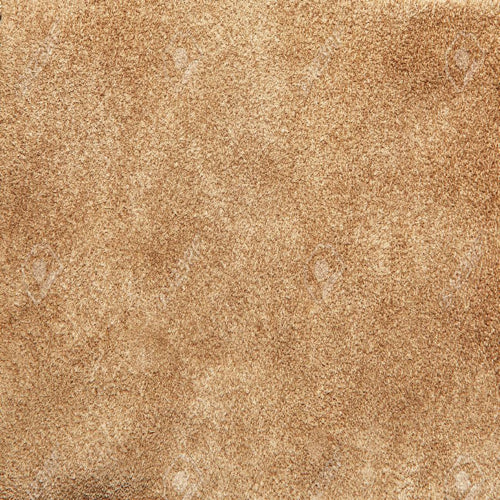 Look: 7-9
Look: 7-9
Feel: 7-10
Cleanability: 1-3
Durability: 2-4
Price Range: 4-8
Suede is created from the splits below the hide's top grain. This means that the fibers of the hide are more loosely entangled.
Therefore, suede is both softer than nubuck and less durable. In truth, beef hide is not the best for suede due to these coarse fibers. However, it is passable once processed thoroughly enough.
Suede picks up stains easily and is hard to clean, given its porous nature. For furniture, it is only suitable for accents such as outback’s, out arms or throw pillows. Skin contact on the daily will cause the suede to darken.
Bi Cast Leather
Bi cast leather, aka PU leather, is cheap and easy to clean. However, it resembles authentic leather only the slightest bit and is comparatively brittle.
 Look: 1-6
Look: 1-6
Feel: 1-5
Cleanability: 8-9
Durability: 1
Price Range: 1-5
Bi cast leather is made by applying a layer of polyurethane to a sheet of split leather (the cut below the top grain).
Bi cast leather is made by applying a layer of polyurethane to a sheet of split leather (the cut below the top grain).
Bi cast leather is prone to splitting, peeling, and cracking.
The only advantages of this material for furniture are the price tag and how easy it is to clean. If authenticity or longevity matter to you, simply stay away.
Wellington's DOES NOT sell bi cast leather.
Bonded Leather
Bonded leather is even cheaper than bi cast leather. It is cheap, easy to clean, and some formulations are durable. However, it probably should not be considered leather.
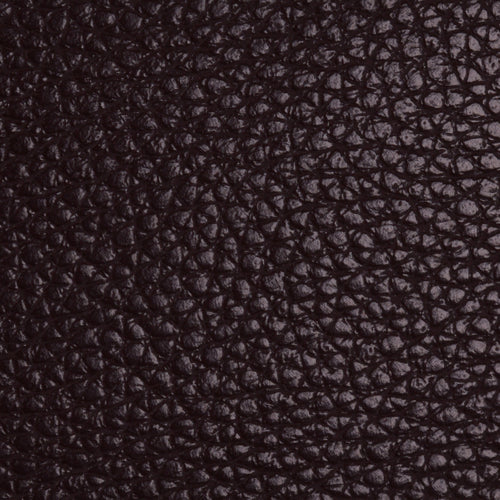 Look: 1-3
Look: 1-3
Feel: 1-3
Cleanability: 8-9
Durability: 1-6
Price Range: 1-3
Bonded leather is usually less than 20% leather (sometimes less than 10%). Basically, all the scraps and shavings left over from the other processes end up here.
They are mixed with bonding agents and other synthetic materials and rolled out into a sheet. Once dry, the sheet is colored and embossed with some sort of artificial texture.
When it comes to bonded leather, you never know what you're going to get. There are so many different formulations. Some have some durability and others flake stride-for-stride with the worse bi cast leather.
Wellington's DOES NOT sell bonded leather.
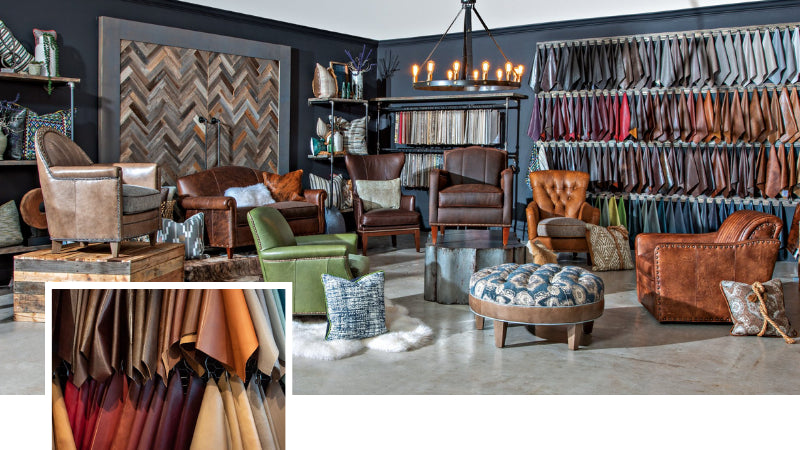
Which leather finish is “the best” will always be in the eyes of the beholder?
Some like the consistent coloring of a finished leather. Others prefer the shifts over time of a pure aniline dyed. Vintage and distressed leathers are also popular choices for furniture upholstery today.
Be aware that if you choose leather with a natural finish, it might not match your lifestyle. If the potential for heavy soiling is high, you probably want to go with a protected leather.
 Go too far in the other direction and you might be tempted by all sorts of other not-quite-leathers. In addition to bonded and bi cast leathers, new “faux” leathers are born every year. If you are not careful you may fall prey to retailers claiming these products are the real thing.
Go too far in the other direction and you might be tempted by all sorts of other not-quite-leathers. In addition to bonded and bi cast leathers, new “faux” leathers are born every year. If you are not careful you may fall prey to retailers claiming these products are the real thing.
Also, some manufacturers will use lower quality leathers on the backs or sides to cut costs. At the least, be wary of the possibility. While this might help you cut your final costs, be aware that the difference will become more and more prominent over time.
Not only do these synthetic substances wear much differently than real leather, but they do not have the same texture and breathability. They have a manmade plastic feel.
Real leather is always room temperature because it is a natural product that “breathes” through the hide's pores. It does not get sticky, rigid, hot, or cold. However, almost all leather like materials will.
High-quality leather is renowned for its texture, which continues to get better with use. Low-quality leather generally has an artificial texture that never ages well.
At Wellington's, we always recommend the highest quality leather for your next sofa. All of the brands offered by Wellington’s only use premium select hides from the finest tanneries all over the world.
Frame Materials
 The quality of the leather on the outside of your furniture is one thing. The quality of the wood on the inside is something different altogether.
The quality of the leather on the outside of your furniture is one thing. The quality of the wood on the inside is something different altogether.
Kiln-dried hardwoods are the traditional choice for high-quality furniture frames. The kiln-drying process removes nearly all the moisture from the wood, which prevents twisting and warping. Most high-end furniture manufacturers even go one step further and use knot-free wood which helps with the life of the frame.
Furniture made from quality hard woods—such as oak, walnut, ash, or maple—is more expensive. But it lasts longer and can handle more abuse. Softwoods are better suited for decorative furniture.
In recent years, furniture made with high-quality plywood has been getting more and more respect from manufacturers and retailers alike. Plywood is an engineered wood made by gluing layers of lumber together under high pressure. It can be quite strong and less expensive. Many medium end furniture manufacturers are starting to use this in replacement of solid hardwood frames.
However, plywood has a low-grade little brother that goes by several names, including particle board, composite board, and fiberboard. You want to avoid leather furniture using this weak material as it will not last. None of the name brands offered by Wellington's offers this option.
Whether your furniture frame is made of kiln-dried hardwood or plywood, the thicker it is, the sturdier it will be. For hardwoods, you want at least 1¼” lumber or thicker. For plywood, it needs to be 11 layers or more.
It is relatively easy to determine the quality of leather by looking at or touching a piece of furniture. But it is much harder to detect the quality of the lumber used in the same way.
This is one reason why it is so important to buy your furniture from manufacturers and retailers you trust. Soon, we will help you figure out who you can trust.
But for now, let us help you understand how different aspects of design affect furniture quality.
Frame Design
The materials used to construct a piece of furniture are not the only thing that determines its durability.
In addition to the obvious stylistic impact, the design of your next couch or sofa will have a major bearing on how long it lasts. The best leather furniture manufacturers make sure that their furniture is perfectly balanced and supported. They also stick to dowels and screws over staples.
Different pieces of furniture have different subtleties of design, but there are a few things you should know about different components of your sofa.
 Joints
Joints
Strong joints are one of the most important features of any piece of high-quality furniture.
Woodworking features a variety of joints for different uses. The consensus in the industry is that the strongest and most long-lasting joints are glued-and-screwed double dowel joints. There is really no disputing it.
The best furniture makers then add corner blocks to reinforce major joints. These should also be both glued and screwed (no staples!) into place. Otherwise, they are likely to pull away from the frame.
Legs, Back, and Arms
There is a tremendous amount of variety in furniture design. Despite this, there are a few furniture making best practices that you should look for.
First, the legs, if not part of the frame, should also be made of a hard wood. Otherwise, they could inevitably crack or become uneven. The back and arms should also be integrated into the basic frame as much as possible.
Metal brackets and other support pieces may also be used where needed to strengthen unique elements of any couch or armchair.
Motion Mechanics
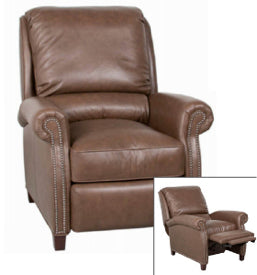
Just because a chair or an end of your sofa has a few moving parts does not mean it should be fragile.
Too often, shoddy manufacturers feel that novelty is an excuse for a lack of durability. Motion frames should be built with the same materials as their stationary counterparts. They should also have (at least) the same joint reinforcement and overall support. Make it a point to find out.
When it comes to moving or motion furniture, be sure that you ask as many questions about the build as possible so that you can make sure it will last. Otherwise, you might pay for a recliner and have it transformed into nothing but a wobbly armchair after a few months.
Keep in mind that all moving parts are destined to fail eventually. But if you buy high-quality furniture, you will always get your money's worth.
Suspension System
Held by the frame, furniture's suspension is the part that holds your weight.
The type and quality of a piece's suspension are the main factor that determines the “ride”, or how it feels when you sit on it.
Just like with every other component of leather furniture, there is a wide disparity between the best and the worst. Top-notch suspensions are not only comfortable, but they remain consistent over time.
Below you will find the four main types.
8-Way Hand Tied Coil Springs
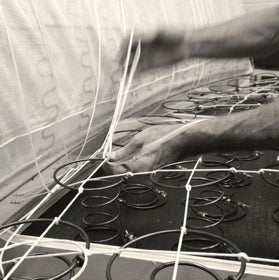 8-way hand tied coil spring suspensions have long been considered the best.
8-way hand tied coil spring suspensions have long been considered the best.
Creating this type of suspension system is just as labor-intensive as it sounds. And that is what makes for the highest quality and longest lifespan of your leather sofa.
A true 8-way hand tied coil suspension starts with one of two foundations mounted directly to the base of the frame. The more traditional foundation uses polypropylene reinforced with steel bands. Today, some furniture makers are opting for an interlace web bottom. Either is acceptable.
From here, cone-shaped springs of different gauges are placed strategically on the foundation. Then they are hand-tied into place with polypropylene twine. Generally, the more springs, the better the ride.
Each spring is connected to its neighbors and eventually the frame. Each spring serves as a function of 4 pieces of twine (2 directions each = 8-way hand tied coil system).
This process requires the trained skill of a true craftsperson. That is, it is only found in high-end pieces of furniture.
This kind of suspension delivers weight distribution other designs cannot come close to. Plus, those sharing the sofa do not affect each other. The motion of the springs below is contained to just your seat.
This is great for both a couch's ride and longevity.
Drop In Springs
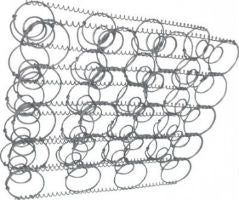
Drop In Springs For a Sofa
Drop in springs are a more affordable option than hand tied springs.
These suspensions are basically a preconstructed metal framework of springs that is inserted into a piece of furniture's wooden frame. Drop in springs are full metal and durable.
They are remarkably like a box spring in appearance, but they function mostly to expedite the manufacturing process. Whereas 8-way hand tied suspensions rest on the bottom of the furniture's frame, these are inserted wherever they fit best. Usually to the frames edging.
Drop in springs will never have the same ride as hand tied springs, but some may be less prone to sagging.
Sinuous Springs
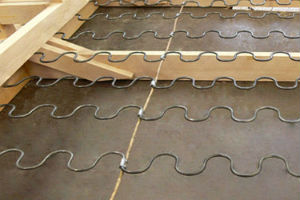
Sinuous, or “zig zag”, springs are another decent option.
They are probably the most used suspension for upholstered furniture today due to the combination of durability and affordable price.
These springs extend in rows from the front of the frame to the back. They are attached with metal clips and covered. Seat cushions are then placed directly on them.
It is not surprising that a row of springs is less expensive than the two more complex setups before. This is part of why they are popular. The other main reason is that their simplicity makes them the preferred system for sleeker furniture designs.
Sinuous springs last a long time, and some people prefer the ride or lack thereof.
Interlace Webbing
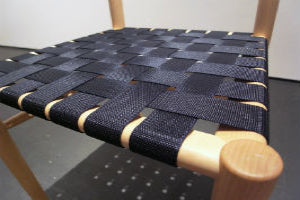 Webbing is the cheapest suspension worth mentioning.
Webbing is the cheapest suspension worth mentioning.
This type of suspension utilizes strips of rubber and nylon to support the cushions. They are attached to the frame running front to back and side to side. They are overlapped and interwoven so that they support each other.
This is the same as the webbing that is used as a base for some 8-way tied systems. Without the springs, there is obviously no true ride.
The elastic strips may provide a little give, but there is no weight distribution at all. Interlace webbing is prone to sagging with consistent use. And heavier individuals should avoid sitting on them altogether.
Interlace webbing is not a good choice if quality or durability are important to you.
Seat Cushions & Filling Material
This last crucial component of leather furniture design obviously has a lot of bearing on comfort. But you might be surprised to find out how important filling is to a sofa's lifetime.
Especially when it comes to the back and armrests, proper padding is required to protect the leather from the sharp edges of the frame. Otherwise, it will get worn from the inside-out.
The number of layers and type of padding used also has an impact on how comfortable your furniture feels. This is especially true for the part you sit on.
Unless you're dead set on a style that dictates otherwise, you will want leather furniture with removable cushions that can be opened. The main benefit is that you will be able to refill your cushions as they inevitably get worn down over time.
Your cushions have the final say so in the ride of your sofa. Why not leave yourself the option to keep it updated? After all, not all cushions are created equal but there is no need to be uncomfortable, even on an old couch.
While there are many hybrids, at Wellington's we like to divide cushion options into 4 main categories.
Foam
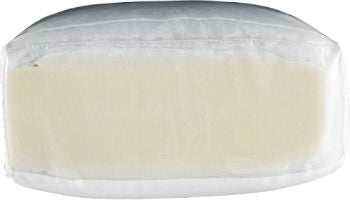
Foam (usually made of polyurethane) is the most important cushion filler. It is used on its own and in conjunction with other materials to create cushions with different properties.
Foams are rated on both density and firmness. Contrary to some information, these are not the same thing. In fact, they are usually expressed together when referring to a particular variety of foam.
Foam density is expressed in pounds per square foot. This means that a 12” x 12” x 12” block would weigh 3.5 lb. for 3.5 density foam. Furniture foam ranges in density from 1.7 to 2.0.
The firmness is expressed as the Indentation Force Deflection or IFD. It is a measure of how much force it takes to compress the foam. The higher the rating, the firmer it is. Foam in upholstered furniture ranges from 12-45 IFD.
To give an example: if you see foam rated at 22/30, it would be 2.2 lb. per square foot and have an IFD rating of 30.
High Resilience (HR) Foam is a variety of foam that has more bounce, faster recovery, and lasts longer than standard polyurethane foam. It is always a better option when available. Please note: the “High Resiliency” designation does not affect density or firmness.
Foam-only cushions provide a firm sit and taunt appearance. Over time, “comfort wrinkles” will develop as the leather stretches. When assembled properly, they almost never need fluffing as compared to a down seat cushion.
Foam & Filling
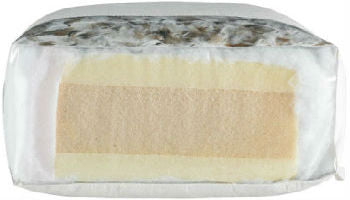
If you are into soft seat cushions or want a more relaxed looking sofa, you'll want more than just foam.
Down and feathers have long been the cushion filling of choice due to the softness and loft it provides. The foam is usually wrapped in polyester fiber and a down-proof case. The filling goes around the foam and then a muslin ticking is added to the inside of the leather to protect it from quills.
Dacron is another option that is lower cost than down but does not provide the same loft. Foam and dacron cushions are probably the most common on the market today.
Remember that the firmness of the foam will have the most bearing on how long any given foam-and-filling cushion will last and retain its shape.
Innerspring
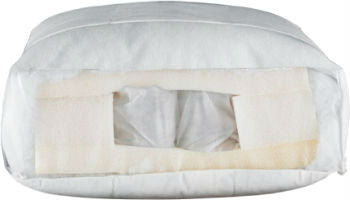
Seat cushions with innerspring coils provide superior support and durability over other designs.
In these cushions, coils are encased in the foam. Then the center gets the same wrapping and extra filling as the previous variety. Because they are already on the high-end you can expect innerspring cushions to be made with a down topper more often than not.
This option retains its shape very well over time.
Down Plush
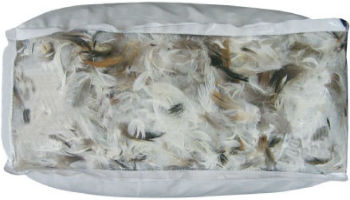
Arguably the softest and most luxurious, down-only cushions are certainly the most traditional.
Also called blend down cushions, this is the only real choice for anyone who fantasizes about diving into their couch.
There is no comparing the loft of down plush cushions and others. So, it isn't surprising that they require a significant amount of fluffing and primping to keep them from looking sloppy. But if you can afford the maintenance, there is nothing else like them.
This type of seat cushion works best on an accent chair. Typically, 100% down filled cushions are not used on a sofa or sectional and never on a sleeper sofa. They will develop comfort wrinkles the fastest of all the cushion options.
How To Choose the Best Leather Furniture for You
Educating yourself about leather furniture was the first step.
Now is the time to take that information and select furniture that is the right fit for you.
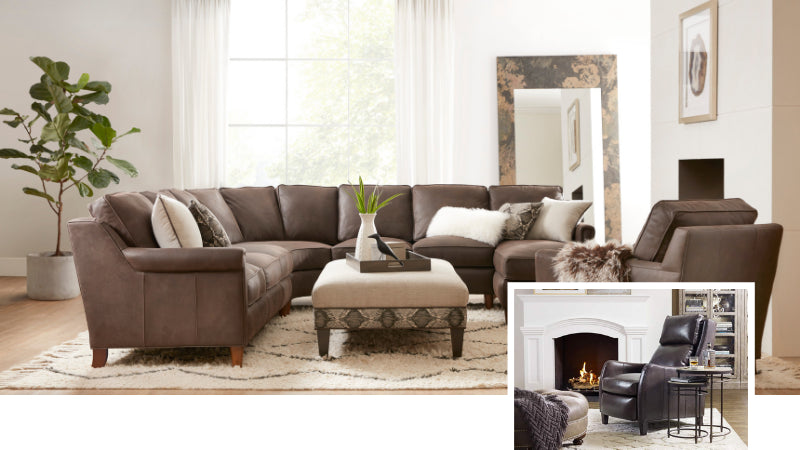
It is all about finding the correct mix of what you want and what you need. In this case, that will come at the intersection of your budget, your intended use, and your taste.
It's pretty obvious:
What you can afford should determine your choice more than anything else. The key then is to set that as your limit then do everything you can to find a piece of furniture that suits your needs and tastes within that limit.
When shopping for high-quality leather furniture, more than 60% of the cost is for the leather itself. But the quality of the frame construction and the suspension also play a role in the price.
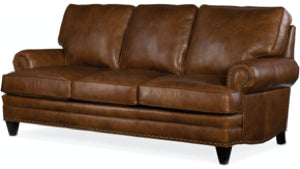 Therefore, it is so vital to determine what is important to you before you begin shopping. The risk of “falling in love” and making a poor decision is too high. If you set your priorities first, things get a lot simpler.
Therefore, it is so vital to determine what is important to you before you begin shopping. The risk of “falling in love” and making a poor decision is too high. If you set your priorities first, things get a lot simpler.
You need to think about how long you want your chair or sofa to last. You need to think about the sort of traffic it will face. And you need to think about the room it is going to wind up in.
If longevity is your highest priority, choose frames made of the hardest woods and make sure the leather is top grain cowhide. If comfort and ride are your highest priority, focus on the suspension and cushions. If looks are your highest priority, place emphasis on colors, style, and leather type.
The ladies at Wellington's Leather Furniture are experts in the field. They can assist you with all the decisions and help you find the perfect leather sofa or sectional your friends and family will fall in love with. Comfort, design, and leather that works with your lifestyle.
Choosing the right leather furniture is something of a balancing act. Remember that it comes in all quality levels, reflecting the quality range of its individual components.
There are all sorts of ways manufacturers might try to lower the production cost of a specific item.
The modern climate pits cheaper, imported leather furniture against domestic leather furniture with all the bells and whistles. At Wellington's, we focus on the highest quality American-made brands and a few foreign ones that emphasize quality and a lower price point.
In the end, we know there is a customer at every price point for leather furniture. However, we have found that those who invest in better furniture, generally remain more satisfied with their purchase, for longer.
This is exactly why we advise customers to set their budgets first. Anyone trying to convince you otherwise clearly does not have your best interests at heart.
This is one reason why it is so important that you only buy leather furniture from those you trust.
Buying Leather Furniture From the Right People
The worst mistake you can make when buying expensive items:
Buying from the wrong company.
That is especially true in this industry. You have seen how many facets there are to how leather furniture is manufactured and designed.
It is all too easy to get marketing messages muddled online or get swindled by in-store salesmen. Luckily, you have already taken the first steps to making the right decision by educating yourself on the leather furniture industry and establishing priorities up front.
There is only a little bit of research left to do. You already know about what you will be buying. All that is left is to decide who to buy from.
Manufacturer Reputation

In the leather furniture industry, different manufacturers cater to different needs. You know that.
But what you probably do not know yet is who caters to which needs. At Wellington's, all our approved manufacturers emphasize high quality. Brands like Leathercraft, Classic Leather, McKinley Leather, and Bradington Young have high standards inside and out.
Get familiar with some of these different manufacturers.
Most of these manufacturers also offer warranties on all their pieces of high-quality leather furniture. Generally, all claims are at the discretion of the manufacturer. With the frame, suspension, and cushions, you might be looking at a few years or more. When it comes to leather, you generally only get a year of warranty coverage. (which is plenty of time for a leather defect to show itself).
Create a shortlist of different brands that offer what you're looking for in terms of quality, style, and price. Arm yourself with this before shopping.
Otherwise, you leave yourself open to more of what the shadier members of the next group have to say.
Retailer Reputation
No matter what else they say:
Retailers want to make sales. So regardless of whether you buy online or in person, you'll always have to contend with marketing messages.
However, if you have followed this guide up until now, you can make the system work for you in your favor.
You already know which brands peak your interest. This narrows your list of retailers once. You can narrow it again by dismissing any company that is not completely transparent with their information.
In person, you will want to apply a healthy level of suspicion to anything a salesman tells you. And we highly recommend asking for a catalog so you can see for yourself what the manufacturer has to say about any items you're interested in. If the information you are looking for is not in the catalog, buyer beware.
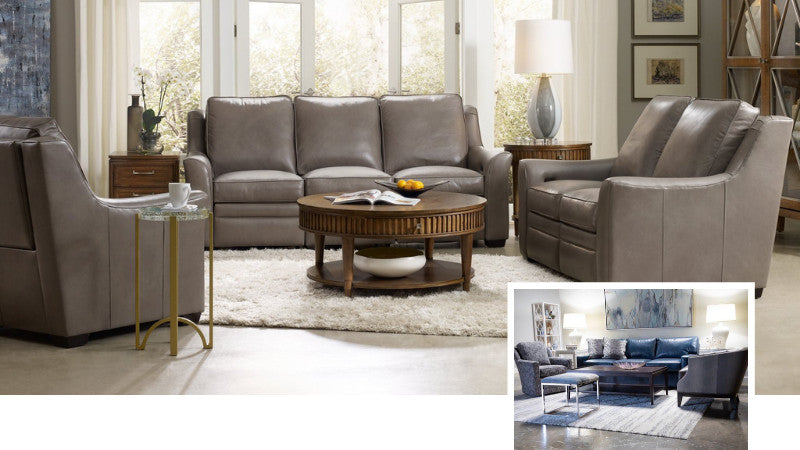
If you want to buy leather furniture online, you want to make sure that any distributors you consider buying from are completely transparent. The more factual information they provide, the more you can trust them.
Dimensions, country of origin, manufacturing techniques, frame construction, warranty information, and leather finish are all crucial pieces of information. Most importantly, store reputation when looking for quality leather furniture.
Keep in mind, unscrupulous sales and marketing take advantage of potential customers by keeping them in the dark.
Wellington's has tried to shed light on a lot of that with this post, all to help you choose the best leather furniture for your needs.
Final Thoughts
If you have made it this far, all you need to do is put the knowledge you have gained to use:
- Keep what you've learned about the leather furniture industry in mind while you
- Determine where your budget, intended use, and taste intersect.
- Then buy leather furniture made by a manufacturer you trust, from a retailer you trust.
If you ever need help with the last bit, Wellington's is here to help at FineLeatherFurniture.com
We pride ourselves on providing both the highest quality service and highest quality leather furniture to our customers. If this Definitive Guide to Buying Leather Furniture has helped you to better understand how to make a smart purchase, reach out to us and find out how we can help you further.
As true leather furniture experts, there is no one better to provide the information you need about our passion. Smart buyers take advantage of that enthusiasm every day by choosing Wellington's.
© Wellingtons Leather Furniture
FineLeatherFurniture.com

